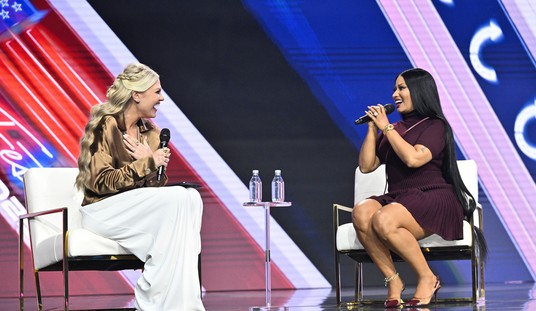The NWEA (formerly the Northwest Evaluation Association) has published a new report on learning loss during the pandemic. The report is based on testing data for over 5 million elementary and junior high students collected by NWEA over the 2020-21 school year. The organization then compared those outcomes to similar data from 2019. Not surprisingly, what they found was that the last school year was bad for everyone but particularly for minority students.
The findings paint an alarming picture of an education system plagued by racial and socioeconomic inequities that have only gotten worse during the coronavirus pandemic. An educational gap became a gulf…
The students who were most affected by the crisis were already behind their peers before the pandemic, and the added losses have pushed them further back.
In one stark example, third graders who attended a low-income school tested 17 percentile points lower in math this spring compared with similar students in 2019, moving the average performance of low-income third graders from the 39th to the 22nd percentile nationally. Scores for their peers in wealthier schools, who have historically performed in the 71st percentile, declined by just seven points, leaving them in the 64th percentile, well above the typical national average.
Here’s a graph from the NWEA report which shows the overall drop in math and reading compared to 2019.

This second chart shows the decline for each grade level by race. As you can see, everyone’s lost ground in terms of their percentile but the declines are larger for Hispanic, Black and Native American students. This graph also shows that younger students in every cohort were more impacted than older ones.

The Times notes that a similar report by McKinsey, also published this week, found the same basic outcome. Elementary students in majority Black and Hispanic schools were six months behind where they should be in math while students in majority white schools were four months behind. Put another way, white students got about half a year’s worth of learning out of the full year while minority students got more like a third of a year of learning.
The NWEA report is clearly aware that there is some pushback these days to the validity of any kind of standardized testing. The first page of the report contains a little box titled “Framing” which seeks to address this concern:
We acknowledge that focusing on differences between race and ethnicity groups, as done in this report, may be seen as adopting a deficit-based perspective. This orientation can be problematic
because it can perpetuate victim-blaming and fails to acknowledge academic strengths that are not reflected in standardized metrics. However, disaggregating outcomes by race and ethnicity
can help highlight the extent of inequity. As we collectively begin the process of recovery, we must confront the highly inequitable prepandemic state of education in this country. This is the time, more than ever, to fundamentally reshape how opportunities and resources are allocated and deploy supports where they are most needed, now and into the future.
But the NY Times spoke to one professor who objected on precisely these grounds, i.e. that any testing that frames the issue as minority students “falling behind” is not measuring the full spectrum of learning.
“The problem with the learning loss narrative is it is premised on a set of racialized assumptions and focused on test scores,” said Ann Ishimaru, an associate professor at the University of Washington College of Education who pushed back against framing the pandemic’s impact as children “falling behind.”
“It is especially kids of color who are presumed to be harmed by being at home,” said Dr. Ishimaru, who said her conversations with families of color suggested that some children preferred learning remotely, because they did not have to deal with micro and macroaggressions and other challenges they encounter in school.
She argued that many children learned plenty in the past year and a half — about loss and grief, about racism and resistance, about cooking and family traditions at home. “What if we were to focus on the learning found, and then we rebuild our education systems from that learning?” she said.
This idea, that students were simply learning different but equally important things during the pandemic, isn’t isolated to this one academic at UW. Back in February I pointed out that Gabriela Lopez, the president of the San Francisco school board, was presented with similar data showing the achievement gap was getting wider. And she responded by making this same argument about alternative learning that isn’t measured:
“They are learning more about their families and their cultures, spending more time with each other,” López said. “They’re just having different learning experiences than the ones we currently measure, and the loss is a comparison to a time when we were in a different space.”
The NY Times also published a story in April which quoted a Seattle high school teacher saying something very similar:
Jesse Hagopian, a Seattle high school teacher and writer, said testing to measure the impact of the pandemic misses what students have learned outside of physical classrooms during a year of overlapping crises in health, politics and police violence.
“They are learning about how our society works, how racism is used to divide,” he said. “They are learning about the failure of government to respond to the pandemic.”
It’s very possible that students were learning things at home, the problem is that those things aren’t the fundamental skills that schools were designed to teach, e.g. reading, writing and arithmetic. Arguing that learning losses in those fundamental categories were offset by some sort of impromptu cultural enrichment or woke independent study of the government response to the pandemic is nonsense on stilts.
But as usual, some on the left would rather blame the testing that reveals the deficits than the decision makers who contributed to them. In this case, we know that a lot of private schools were open in person for most of the last school year despite the pandemic. My guess is those students did a lot better than their public school counterparts considered in these reports. If so that suggests the decision by teacher’s unions to keep schools closed was a major factor in the learning loss revealed in these tests. But of course no one whose business relies on good relationships with schools and teachers wants to cross the unions. It’s just easier to claim the testing is the problem.








Join the conversation as a VIP Member